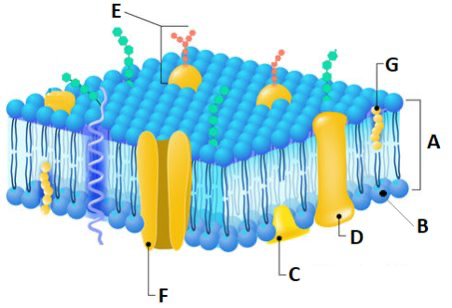Fluid Mosaic Model
The currently accepted model of the cell membrane is called the fluid mosaic model
Phospholipids can move within the bilayer, making the membrane fluid meaning they can change shape and flow.
The term 'mosaic' refers to the diverse collection of molecules that make up the membrane
The fluidity of the membrane allows for:
Formation of vesicles
Materials to be taken into cells by endocytosis or released by exocytosis
Movement of transport proteins within/around the membrane
Membrane fluidity can be further regulated by the presence of cholesterol

Phospholipid bilayer shown with heads facing in opposite directions.
Phospholipids with labelled hydrophilic/phosphate head and hydrophobic/hydrocarbon tail
Peripheral protein, shown as globular structure at the surface of the membrane.
Integral protein shown as embedded globular structure.
Glycoprotein shown as embedded globular structure with protruding carbohydrate (shown as a branching, antenna-like structure).
Channel protein shown with a pore passing through it.
Cholesterol shown in between adjacent phospholipids.
Glycolipid (in green but unlabeled)